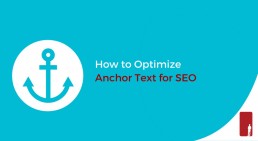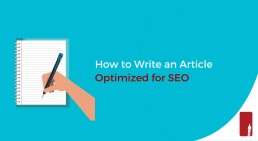How to Optimize Anchor Text For SEO?
In the early days of SEO, black-hat SEO experts were doing everything imaginable to rank their sites on Google which included keyword stuffing and creating spammy backlinks. (Black-hat SEO refers to the use of aggressive SEO strategies and techniques that focus on search engines rather than a human audience). Those older SEO hacks are long gone as we deal with a much more sophisticated algorithm like Google Penguin.
Google Penguin was launched on April 24, 2012 to decrease search engine rankings of websites that violate Google’s Webmaster Guidelines by using black-hat SEO strategies and techniques. Such strategies and techniques are commonly described as link schemes that involve artificially ranking a webpage by manipulating the number of links pointing to the page.
Now that Google Penguin is part of the core Google Algorithm, the anchor text you use in your backlinks and internal links is a lot more important. Anchor texts are an important part of SEO and have a strong impact on your search engine ranking. So in this blog, we will show you how to optimize your anchor text in order to positively impact your SEO.
Related Article: The Beginner's Guide to Link Building for Small Businesses
What is Anchor Text?
Anchor text is the visible and clickable text in a link that appears in a different colour and underlined. Anchor text indicates what’s behind that link, provides context for search engines, and most importantly increases the chance of someone clicking on your link. The image below is an example of an anchor text on a web page. The clickable text that you see in a hyperlink is “basement waterproofing.”
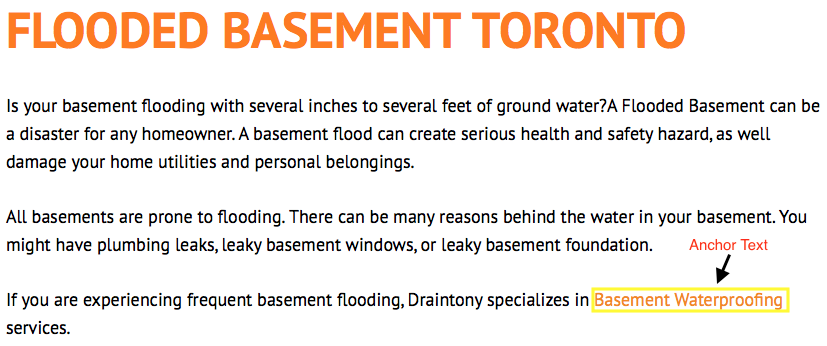
But, what does an anchor text look like in HTML? In HTML, the first piece of code is the URL and the second part describes the link. The image below is an example of an anchor text in HTML. The anchor text that you see in HTML is “debt consolidation.”
Anchor Text with Google Penguin
How does Google Penguin analyze anchor text? How does it determine whether a site should be penalized or not? Well here’s exactly how Google Penguin works:
1. You create a backlink
2. Google indexes the backlink through Search Console
3. Google places your backlink into its database for your specific website known as your link profile
4. Steps 1-3 are repeated over and over again, so now you have a link profile that Google Penguin analyzes
When Google Penguin analyzes your link profile, it compares it to your on-site keyword optimization. (A link profile is the makeup of links directing to your site). So if your on-page content is optimized for “condos for Sale North York,” 100% of your anchor texts shouldn’t be “condos for Sale North York” or you will get a penalty. Google Penguin will see that you are trying to rank for “condos for Sale North York” and you are building links artificially. Therefore, exact match anchor text + keyword-rich optimized = Google Penguin Penalty.
The Different Types of Anchor Texts
So then how do I avoid getting penalized by Google Penguin? In order to optimize your anchor text in order to positively impact your SEO, you need to have a clear understanding of the different types of anchor texts.
1. Generic Anchor Text
Generic anchors are normal text like go here, this page clicks here, read more, additional info, check this out, more info here, and about the author.
2. Branded Anchors
Branded anchors use the brand name as text. These are the safest to use unless your website is an exact match domain. Well-know brands and sites like Best Buy and Amazon will have the highest number of branded anchor texts.
3. Naked Link Anchors
Naked link anchors link back to a site by using the URL. For example, https://retailorsgroup.com/ and www.retailorsgroup.com are examples of naked link anchors.
4. Brand + Keyword Anchors
Brand + keyword anchors are a combination of your brand name and your choice of keyword. For example, “Experiential Marketing by Retailors Group” is an example of a brand + keyword anchor.
5. Latent Semantic Indexing (LSI) Anchors
LSI anchors refer to the variations of your main keyword. Just think of it as a synonym. For example, if your main keyword is “financial advisor”, LSI keywords could include “financial planning,” “wealth management,” and so on.
6. Partial Match Anchors
Partial match anchors is the partial presence of keywords in the anchor text. For example, “useful anchor text guide” and “learn more about anchor text.”
7. Long Tail Anchors
Long-tail anchors are similar to match anchors except that they’re longer. For example, “anchor text is an important part of link building” and “anchor text have a strong impact on your search engine ranking.”
8. Exact Match Anchors
Exact match anchors are the exact match of your target keyword. They are the most important type of anchor text and play a crucial role in improving your ranking or getting penalized by Google. For example, if your target keyword is “optometrist,” your anchor text is also “optometrist.”
Tips & Best Practices for Anchor Texts
Optimizing anchor text without being penalized by Google Penguin for your website can be tricky. However, here are some useful tips and best practices for anchors text to help you optimize your anchor text in order to positively impact your SEO.
1. Keep your Anchor Text Relevant
Make sure your anchor texts are relevant to the content you’ve placed them. For example, if your target keyword is “link building,” you should write an article specifically about link building. The more relevant your article is to your keyword, the better your rank will be on Google.
2. Distribute Different Types of Anchors
You should distribute different types of anchors as it can make or break your search engine ranking. There is no ideal anchor text distribution, however, according to SEMrush, your anchor distribution should be 40% branded anchor text, 25% naked link anchor, 5% brand + keyword anchors, and so on. You can refer to the image below for the anchor text distribution graph.
1. Track your Anchor Texts
It’s important to track the anchor texts that you’ve used when you’re building backlinks. Therefore, you need to be organized and ensure you’re not over-optimizing your page with keyword-rich anchors.
4. Acquiring the Right Links
You should acquire the right links from sites with high traffic and authority. Having authoritative sites linking to you is great for your link profile. Focus on sites with Domain Authority above 30 and Page Authority over 35.
The Beginner’s Guide to Link Building for Small Businesses
The importance of building high-quality links has never been higher as the landscape of SEO and link building is always changing. Link building is the process of acquiring hyperlinks from other websites to link back to your own website. Search engines like Google use links to crawl the web, crawl the links between the individual pages of a website, and crawl the links between entire websites.
How a Link is Created
Before you begin to understand the importance of link building, it’s important to understand how the basics of how a ink is created, how search engines like Google see links, and what they can interpret from them.
Example: <a href=“https://draintony.com/basement-waterproofing”>Basement Waterproofing</a>
1. Start of Link Tag
The start of the link tag (“<a”) is called an anchor tag. The link tag and tells the search engine that a link to something else is about to follow.
2. Link Referral Location
The “href” stands for hyperlink referral. The text inside the quotation marks (href=“https://draintony.com/basement-waterproofing”>) indicates the URL to which the link is pointing. The text inside the quotation marks could also be the address of a file or image to download.
3. Visible Text of Link
This is the text (“Basement Waterproofing”) that users see on the page. If they want to open the link, they need to click on the text. The text is usually formatted with blue and/or underlining to stand out from the text that surrounds it.
 4. Closure of Link Tag
4. Closure of Link Tag
The closer of link tag (“</a>”) signals the end of the link tag to the search engines.
What Links Mean for Search Engines
There are 2 ways that search engines use links: to discover new web pages and to help determine how well a page should rank in their results.
When search engines crawl pages on the web, they extract the content of those pages and add them to their indexes. Then they decide if the page should be ranked well for relevant keywords by looking at the content of the page, the number of links points to that page from external websites and the quality of the external websites. Therefore, the more high-quality websites that link to you, the more likely you are to rank well for relevant keywords in search results.
Don’t you want your business to show up on the top results in Google? If you type in “cultured marble Kitchener” on Google, you’ll see Marble Tradition on the top results for this keyword.
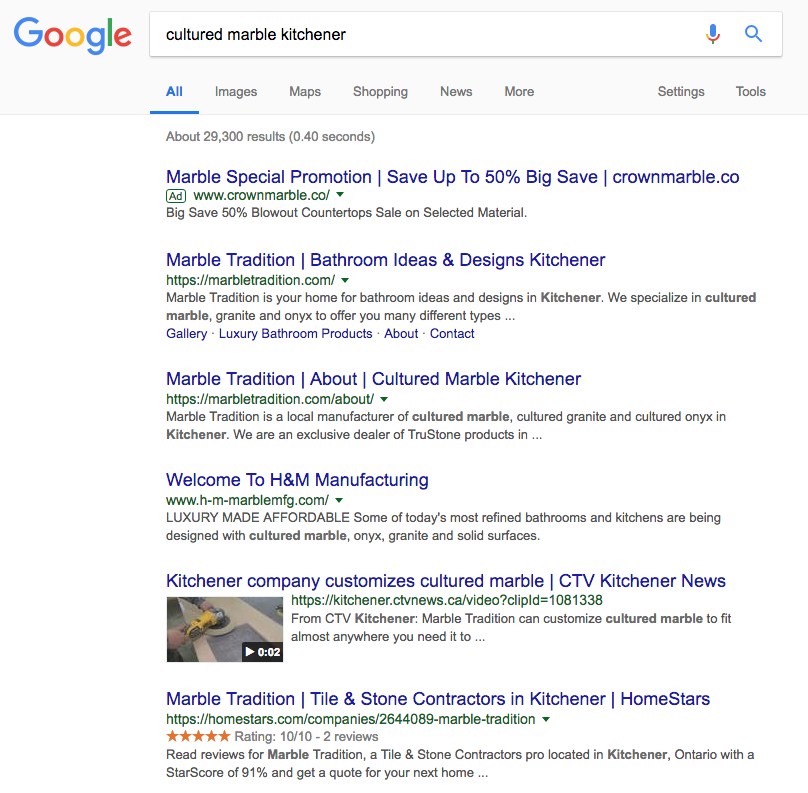
How Link Building Can Benefit Your Small Business
We know that search engines like Google looks at the number of links that point to your page from external websites and the quality of the external websites to determine how well your page should be ranked for relevant keywords. However, there are other benefits to link building:
1. Building Relationships
Linking building involves reaching out to relevant websites, blogs, and influencers in your industry. For example, if you own an Italian restaurant in Mississauga, you should reach out to insauga. They write blogs about food, lifestyle, new openings, real estate, and many more. They are also the largest online media company in Mississauga with over 5 million reaches per month.
Reaching out to key influencers in your industry will help you build long-term relationships which will help your business become highly regarded and trusted.
2. Sending Referral Traffic
We know that the impact of links from high-quality websites impacts your rankings, but what about the impact of those links on referral traffic? Wouldn’t having a good link from a highly-visited website lead to an increase in your traffic? The answer is yes.
If you stumble across a blog by insauga about “The Top 5 Italian Restaurants in Mississauga”, wouldn’t you look into those restaurants (check out their menu and where it is located) and perhaps even going to eat at one of those restaurants? Therefore, if you have a link from a relevant website, chances are that the traffic is also relevant which can lead to an increase in sales.
Link Building Strategies
There are many link building strategies you can use to get external websites to link to yours. Here are the 3 ways on how to get other sites to link to you:
1. Content Creation
Create unique and high-quality content that people will want to reference and link to, and tell people about it.
2. Reviews and Mentions
Don’t be afraid to put your business in front of influencers. Approach influences in your industry, such as bloggers or people with a large social media following about your product or service.
3. Links from Friends and Partners
Ask your friends and partners to link to your site. However, just make sure the links are from sites are in the same industry. This will have more value than links from random and unrelated sites.
How to Write an Article Optimized for SEO
Content creation is key to your business. It is crucial to regularly produce content or you will lose valuable traffic to a competitor.
Knowing how to write an article optimized for SEO that will rank on the first page of Google is critical if you want to drive traffic to your site. It is a waste of time to create content if your content does not appear among the first couple of results.
In this article, we will cover the 5 steps on how to write SEO articles:
Step 1: Select the Right Keywords
Selecting the right keywords is a big part of whether or not your content will rank. You can select the best keywords by writing a list of keywords that you are looking to target. Then go on Google Keyword Planner to see how competitive your keywords are and the average monthly searches for each keyword.
For example, if you’re a plumber specializing in basement waterproofing, you might be looking to target keywords such as basement waterproofing, wet basement, and a flooded basement. Or if you’re a financial advisor, you might be looking to target keywords such as financial advisor, financial planning, and financial management.
Step 2: Create a Lengthy Posts
The golden rule of white-hat SEO is to creating lengthy posts. When people spend more time on your site, it will lead to better rankings. Time on site is one of the most powerful metrics when it comes to SEO. Writing shorter is easier and quicker, but writing content in long-form will outperform short content.
You can write long posts by searching for a topic that you want to write about and condensing all of the information that the top 5-10 results present. Therefore, this will allow you to provide the most information out of all of your competitors so you can outrank them.
Step 3: Use Compelling Meta Titles and Meta Descriptions
When you use compelling meta titles and meta descriptions, this will increase your click-through rate (CTR). CTR is an important factor that Google takes into consideration when ranking sites. When it comes to your meta descriptions, you have 160 characters to convey a general idea of your post. Make it count by leaving some cliffhanger at the end to make people inclined to read more.
For example, if you’re looking for condos for sale North York, would you be inclined to click on a site with the metal title “Condo 3 bedroom North York - Trovit?” Below is an example of a good and bad meta title and meta description.




Step 4: Structure Your SEO Article
You have to make sure you structure your SEO article using H tags to divide your content into sections. You can do this by using the H1 tag for the blog post title and H2, H3, H4 tags for your subheadings. You should also include images to make your content more engaging and use alt text on all your images.
Take a look at Marble Tradition’s site. They are using the H1 tag for cultured marble Kitchener and H2 tag for bathroom transformation as their subheading.
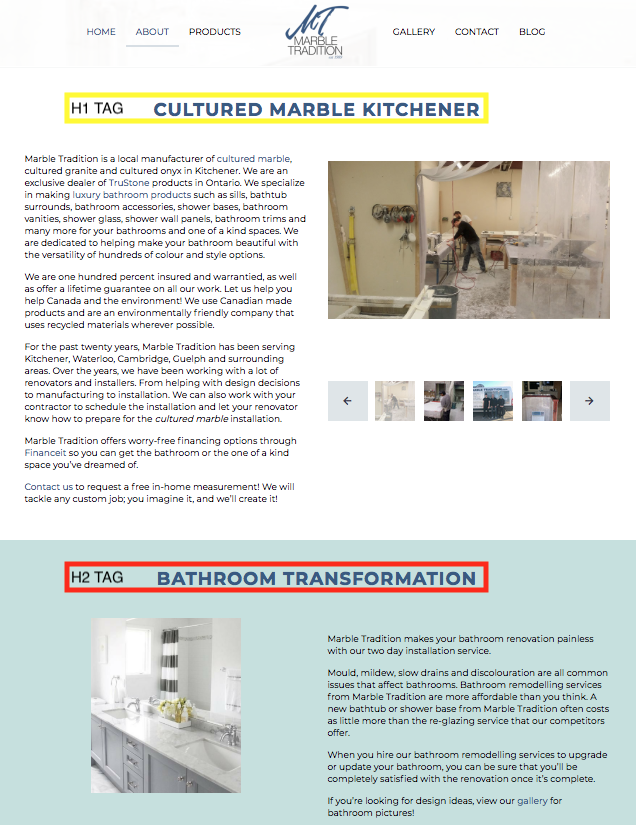

Step 5: Permalink Should Include Main Keywords
Your URL should include the main keyword that you’re looking to rank for that specific web page or blog post. You should try not to use stop words such as “a”, "to", "an", “the”, and “is” in your URL.
For example, in this article, my permalink is "write SEO articles" rather than "How to Write an Article Optimized for SEO."
Try these 5 steps on how to write SEO articles and let us know how your article did! You can comment on the article below or drop us a line at info@retailorsgroup.com.

